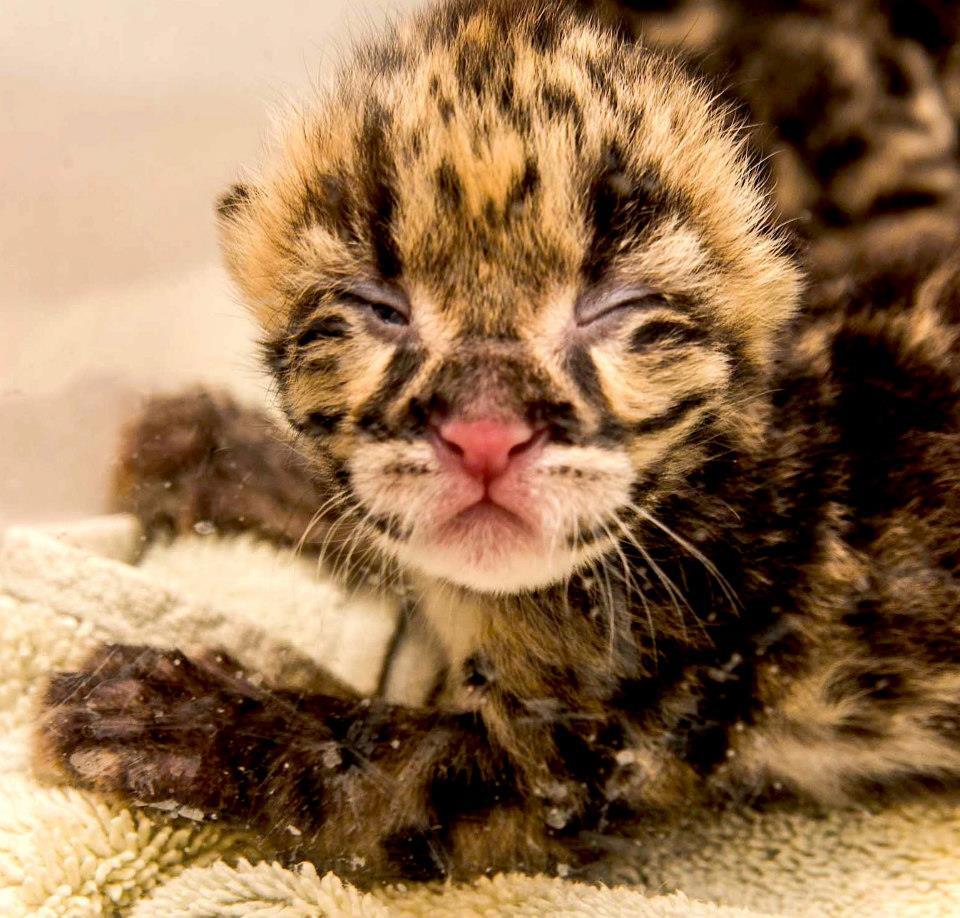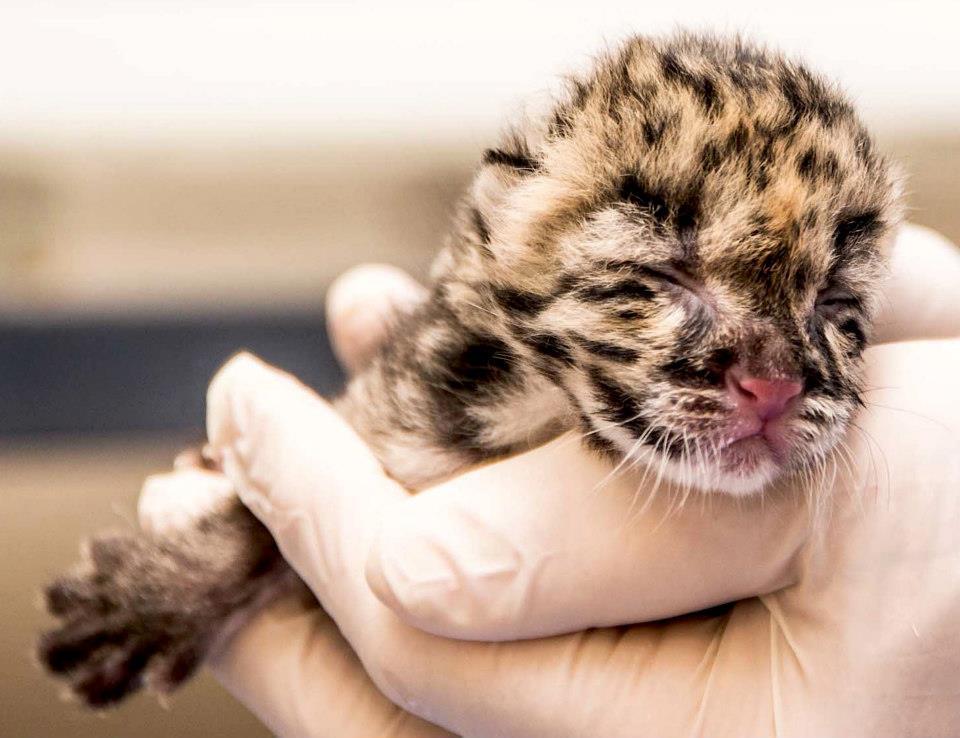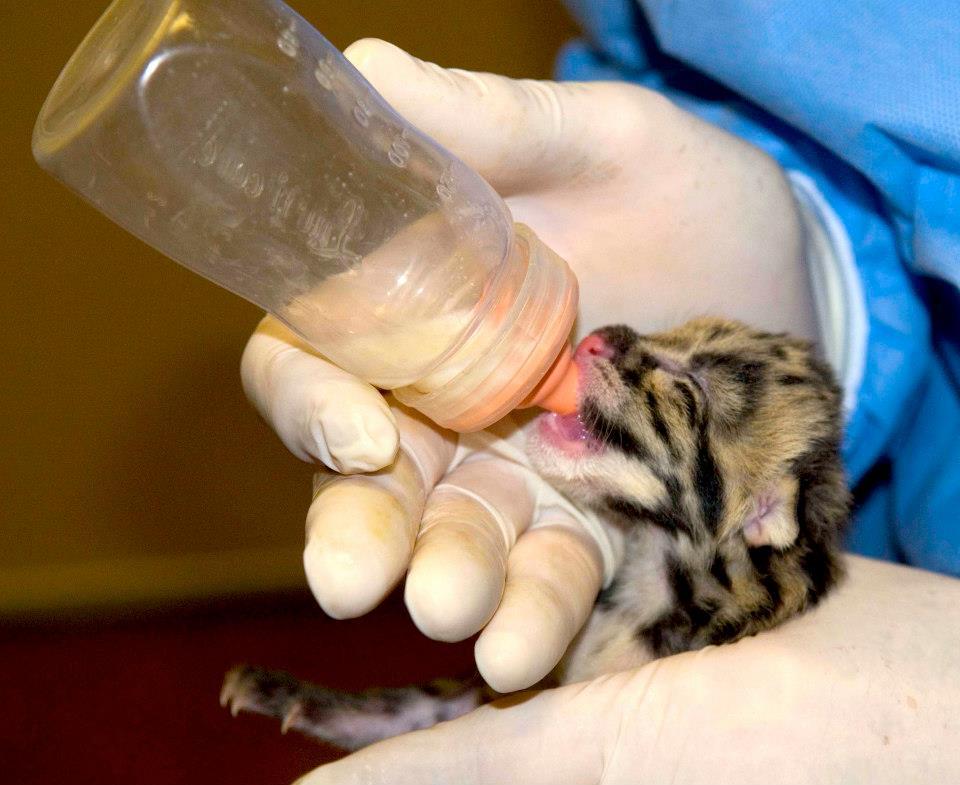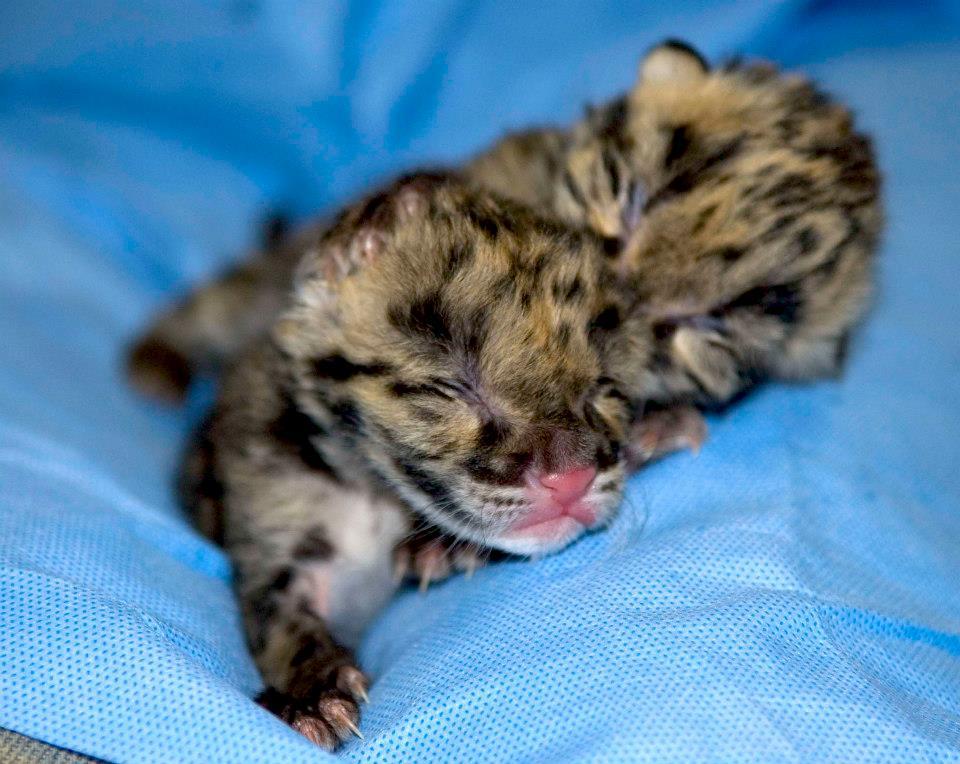Thursday, February 28, 2013
Image of the Day
Follow Tambako's visual journey on Facebook HERE
Wednesday, February 27, 2013
National Zoo's Clouded Leopard Babies: Two Cubs Born At Smithsonian Conservation Biology Institute (PHOTOS)
The Huffington Post
|
By Arin Greenwood
Posted: 02/25/2013
This kind of cute can (almost) make you forget about the impending sequester!
Check out these impossibly adorable photos of the National Zoo's new baby clouded leopards. These two munchkins were born in early February, at the Smithsonian Conservation Biology Institute in Front Royal, Virginia.
These cubs aren't just cute, they're genetically important. Clouded leopards are listed as "vulnerable" on the IUCN’s Red List of Threatened Species. Due to hunting and deforestation in Southeast Asia, there are thought to be fewer than 10,000 of these animals, said to have an "arboreal lifestyle," in the wild.
Also not helping the species' survival: male clouded leopards' somewhat inexplicable propensity for attacking, sometimes killing, prospective mates. (See, e.g., Kitchener, A.C. (1999). Mate killing in clouded leopards: a hypothesis. IZN (International Zoo News).)
The zoo is trying to reduce these risks by hand-rearing these new babies -- which means giving them bottles, and otherwise taking care of them, while making sure not to "imprint" in a way that'll stop them from being able to interact productively with other clouded leopards.
“We feed them, burp them, and put them back to sleep,” hand-rearing expert, and senior mammal keeper at the Smithsonian Conservation Biology Institute headquarters, Kenneth Lang told Smithsonian Zoogoer in 2011. “We don’t try to make them pets.”
Early pairing with mates also seems to increase the likelihood of passing on these cutie-pie genes.
This is the second litter for mother Sita and father Ta Moon, who had another set of twins in 2011.
Ta Moon, born in March 2009, was the first clouded leopard cub born at the Smithsonian Conservation Biology Institute.
Lindsay Renick Mayer, a zoo spokesperson, told The Huffington Post that the cubs are a boy, weighing 800g, and a girl who now weighs 700g. (That's under two pounds each -- full-grown, the male will likely reach about 50 pounds, the female about 35.)
"Their eyes and ears are now open," she said. "Their activity level is increasing daily and they now recognize when we are in the room and about to feed them. They are normally found asleep and wrapped around each other when we enter the room. The feedings have been dropped from 7 times a day to 6 times a day and will be dropped again next week.
The new babies won't go on public display while they are at the Fort Royal facility. "However, the Species Survival Plan for clouded leopards will determine where they go after SCBI," Mayer said. "So they might eventually wind up at a zoo where the public can visit them."
Now back to sequester for a moment: The National Zoo's director, Dennis Kelly, told the Washington Post how the upcoming $85 billion in budget cuts would affect that institution:
This kind of cute can (almost) make you forget about the impending sequester!
Check out these impossibly adorable photos of the National Zoo's new baby clouded leopards. These two munchkins were born in early February, at the Smithsonian Conservation Biology Institute in Front Royal, Virginia.
These cubs aren't just cute, they're genetically important. Clouded leopards are listed as "vulnerable" on the IUCN’s Red List of Threatened Species. Due to hunting and deforestation in Southeast Asia, there are thought to be fewer than 10,000 of these animals, said to have an "arboreal lifestyle," in the wild.
Also not helping the species' survival: male clouded leopards' somewhat inexplicable propensity for attacking, sometimes killing, prospective mates. (See, e.g., Kitchener, A.C. (1999). Mate killing in clouded leopards: a hypothesis. IZN (International Zoo News).)
The zoo is trying to reduce these risks by hand-rearing these new babies -- which means giving them bottles, and otherwise taking care of them, while making sure not to "imprint" in a way that'll stop them from being able to interact productively with other clouded leopards.
“We feed them, burp them, and put them back to sleep,” hand-rearing expert, and senior mammal keeper at the Smithsonian Conservation Biology Institute headquarters, Kenneth Lang told Smithsonian Zoogoer in 2011. “We don’t try to make them pets.”
Early pairing with mates also seems to increase the likelihood of passing on these cutie-pie genes.
This is the second litter for mother Sita and father Ta Moon, who had another set of twins in 2011.
Ta Moon, born in March 2009, was the first clouded leopard cub born at the Smithsonian Conservation Biology Institute.
Lindsay Renick Mayer, a zoo spokesperson, told The Huffington Post that the cubs are a boy, weighing 800g, and a girl who now weighs 700g. (That's under two pounds each -- full-grown, the male will likely reach about 50 pounds, the female about 35.)
"Their eyes and ears are now open," she said. "Their activity level is increasing daily and they now recognize when we are in the room and about to feed them. They are normally found asleep and wrapped around each other when we enter the room. The feedings have been dropped from 7 times a day to 6 times a day and will be dropped again next week.
The new babies won't go on public display while they are at the Fort Royal facility. "However, the Species Survival Plan for clouded leopards will determine where they go after SCBI," Mayer said. "So they might eventually wind up at a zoo where the public can visit them."
Now back to sequester for a moment: The National Zoo's director, Dennis Kelly, told the Washington Post how the upcoming $85 billion in budget cuts would affect that institution:
Some zoo projects, such as the planned acquisition of cheetahs for the research facility in Front Royal may be reconsidered, Kelly says. But with five curator jobs and numerous keeper slots vacant because of three years of frozen budgets, the sequester could nudge the zoo closer to what Kelly calls the doomsday scenario: closing one of its expensive major exhibits. “We’re to the bone,” Kelly says. “I will never compromise on animal welfare or human safety, but we’re now at the point where we’d have to lop off a whole module.” source
Subscribe to:
Posts (Atom)




